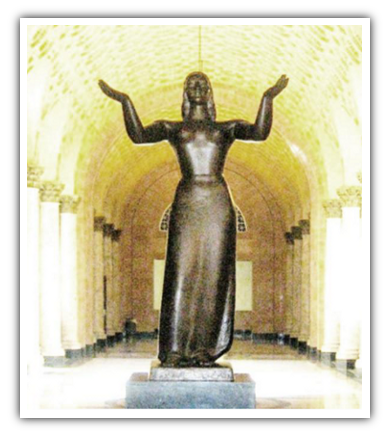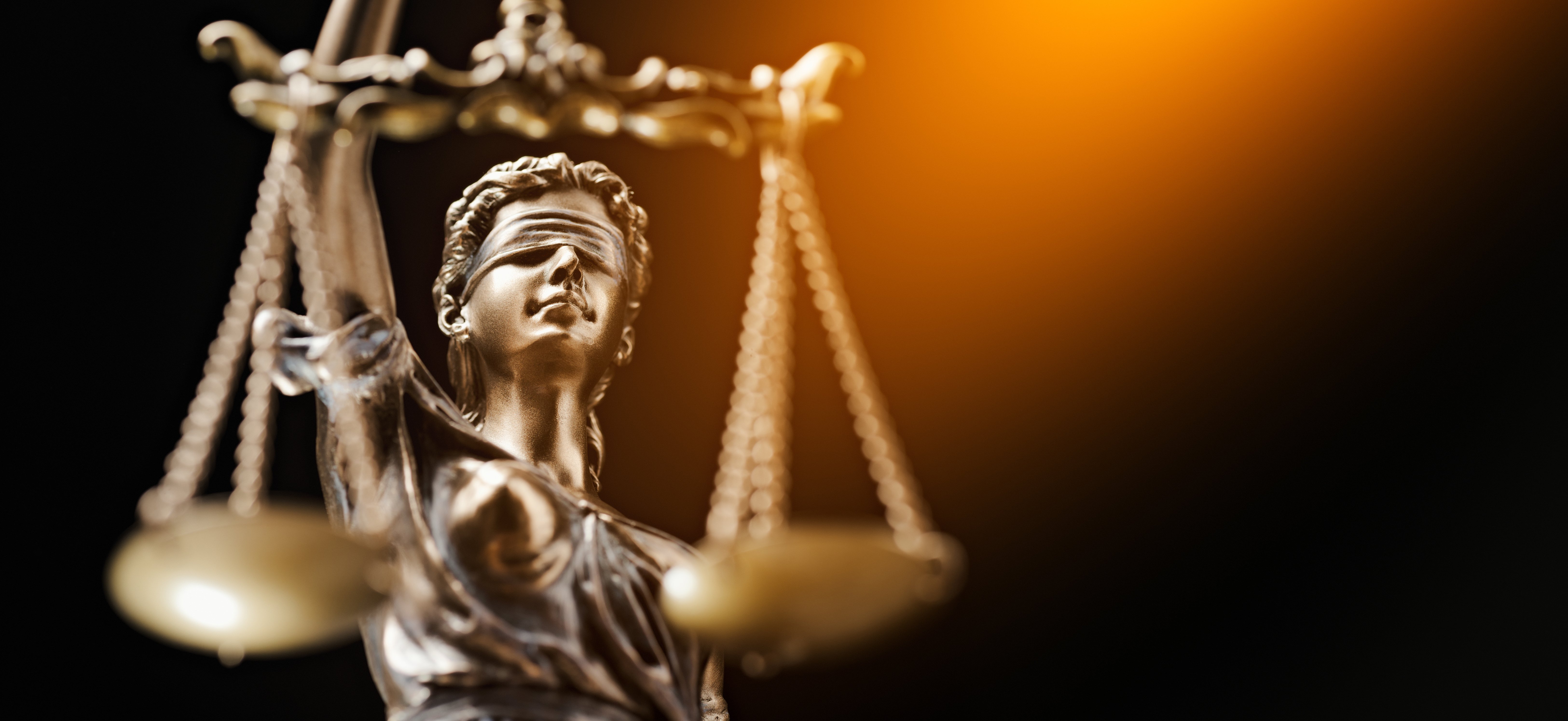In my last blog, Art in the Courthouse, I stated how impressed I was by many of the pieces I have seen in courthouses. One of my favorites (shown image below) welcomes the public at the MLK Federal Courthouse in Newark, New Jersey. The contemporary sculptural expression created by Diana K. Moore in 1991 represents the concept of “blind justice” and is located at the courthouse entrance. This blog will address the importance of art in the courthouse planning process.
As a first step in addressing the issue of relevance, let me go back in time to the ancient Greeks. The courthouse sculpture of “lady justice” is modeled after the goddess Themis, Titaness of law and order. She was described in Greek tradition as “the personification of divine order, natural law, and custom” and “the organizer of the communal affairs of humans, particularly assemblies." Seem appropriate? The more recently added blindfold, in this and other statues of the goddess, reinforces the concept that justice is impartial. At the base of the sculpture, the American Poet Laureate, Mark Strand has added the following equally relevant inscription:
WHEN JUSTICE DOES ITS PUBLIC PART IT EDUCATES THE HUMAN HEART
THE ERRING HUMAN HEART IN TURN MUST DO ITS PRIVATE PART AND LEARN
Justice of Another Kind at the Courthouse
Another sculpture of lady justice – albeit in a quite different pose - also resides in the courthouse complex. As seen below, it can be found in a corridor inside the Frank R. Lautenberg U.S. Post Office and Federal Courthouse across the street from the MLK courthouse. Ironically, the statue by Romuald Kraus was not entirely well received when it was first commissioned under the WPA program in 1938. The opinionated architect of the courthouse had wanted one of his wife’s sculptures installed instead. Additionally, the judge in whose courtroom the statue was to be placed thought it “smacked of communism.”
 As a result, the 700 pound statue was banished from the courthouse and – for more than two years – traveled the country including stops at the Museum of Modern Art in Washington, D.C. and the Golden Gate International Exhibition at the World’s Fair in San Francisco (where it won first prize as one of America’s great examples of Modern Art). Fortunately, there was a happy ending. After winning a national competition and amid offers of residence in four major museums, an agreement was finally reached in 1940 to return the sculpture to its current home in the Lautenberg U.S. Post Office and Federal Courthouse.
As a result, the 700 pound statue was banished from the courthouse and – for more than two years – traveled the country including stops at the Museum of Modern Art in Washington, D.C. and the Golden Gate International Exhibition at the World’s Fair in San Francisco (where it won first prize as one of America’s great examples of Modern Art). Fortunately, there was a happy ending. After winning a national competition and amid offers of residence in four major museums, an agreement was finally reached in 1940 to return the sculpture to its current home in the Lautenberg U.S. Post Office and Federal Courthouse.
In my next post, I will discuss another important role of the courthouse as a generator of economic development for the downtown areas of larger cities and smaller communities.


















